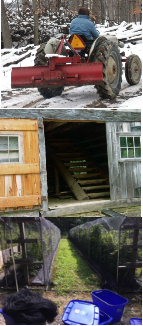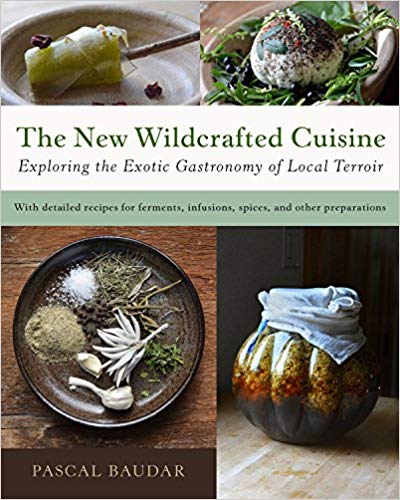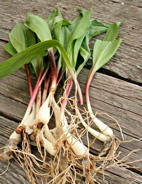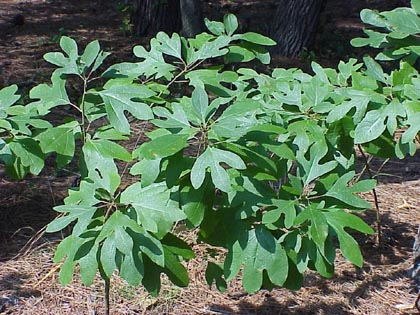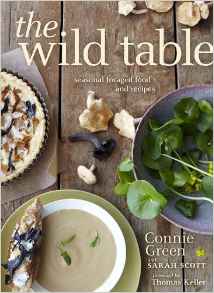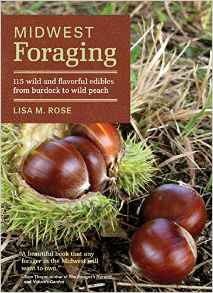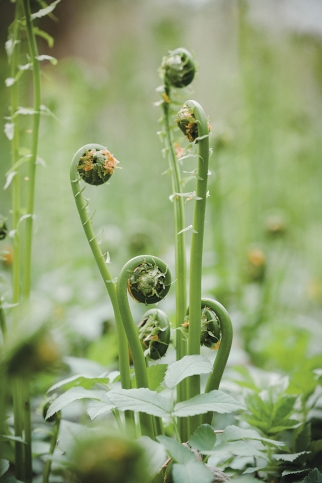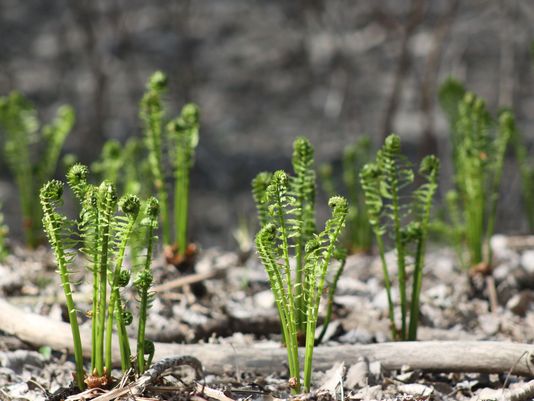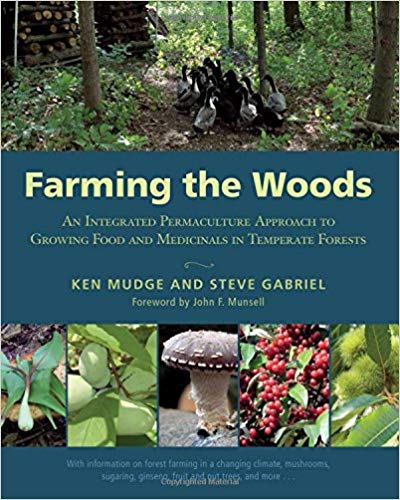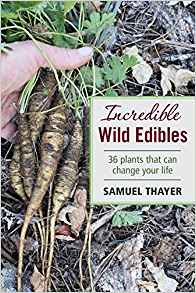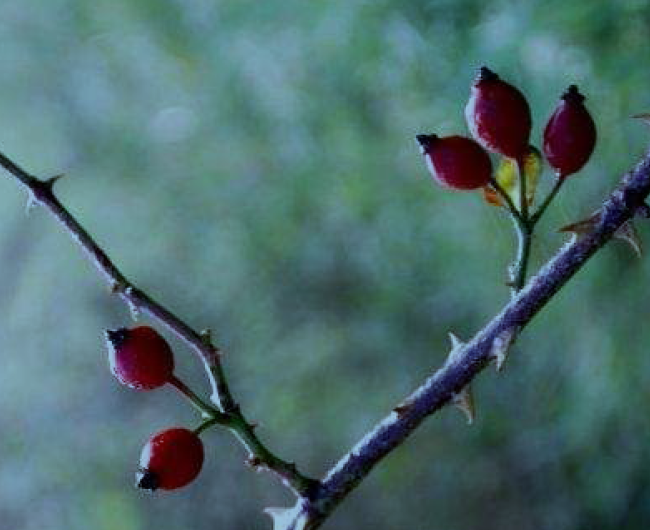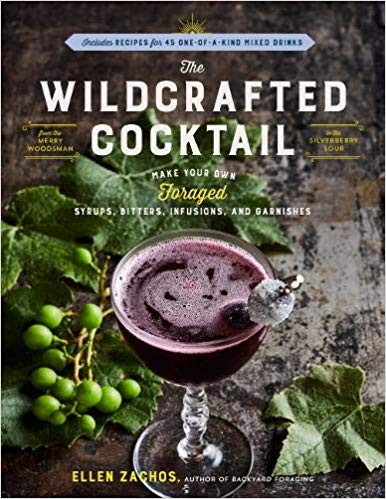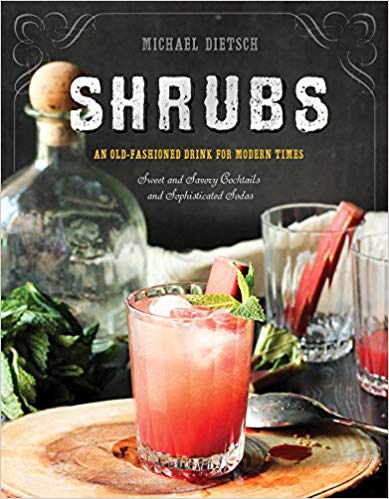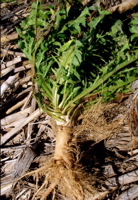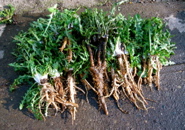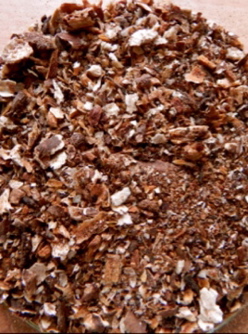|
|
 LOCAL
WILD EDIBLES LOCAL
WILD EDIBLES
The
foothills of the Appalachian mountains have long been a rich source
of everything humans need to live, if you know what you are looking
for. Each area on our farm and areas surrounding our farm present
a wide and varying range of micro-climates which produce a wide
and varying group of plants and shrubs.
All
of the land we harvest on is private and if it is not our farmland,
we have permission to harvest. We harvest responsibly and we take
care to not over harvest. If the the forest does not produce something
one year, we simply do without. We do not over harvest in years
of plenty either. We know what we need and we harvest only those
quantities. When we run out, we run out.
|
As
with our cultivated crops, we follow biodiverse and natural
methods in keeping the environments where these plants grow
healthy. We we follow Forest Stewardship Council Practices(FSC)
which encourages the efficient use of the forest’s
multiple products. You can read more about how we take care
of our forest here.
This
page describes the native plants,
berries, fruit and roots
we harvest for markets. You
can read here
about the products we take to market using
these plants.
We
keep all of our Hickory information here.
Read
about our mushrooms here.
|
|
|
|
FORAGED: NATIVE PLANTS • BERRIES &
FRUIT
• ROOTS
NATIVE
PLANTS
 Dandelion
(Taraxacum officinale) Dandelion
(Taraxacum officinale)
The Dandelion Plant is an incredible and
versatile wild edible. From flower to root, the entire plant
is edible. Dandelions are perennial. They are short plants
that usually don't grow larger than 2 feet high. They green
stalks and leaves and yellow flowers. They grow wild in
the spring and all season. Leaves have a sharp,
tangy flavor similar to endive or chicory. Good
source of iron, vitamin C and A. A mild diuretic.
We harvest fresh flowers for use in our teas, syrups and
jam. |
 Sassafras
(Sassafras albidum) Sassafras
(Sassafras albidum)
Sassafras is very common in Adams County, it can be a shrub
or a tree. Sassafras has three differently shaped leaves:
3 lobed, mitten-shaped, and no lobes. The roots were once
used in root beer and the leaves are used in making filè.
We harvest the young leaves in early summer and dry them
for use in several of our products. |
| |
 Wild
violet (Viola papilionacea) Wild
violet (Viola papilionacea)
One
of the stars of Spring in the raspberry field, easy
to find especially mixed with the dandelions! Used
in a variety of applications from fresh to preserved.
|
|
|
 Fiddlehead
Fern Fiddlehead
Fern
In North America, the Native Americans were the first
to discover and eatthese dainty delicacies. Fiddleheads
have been part of the diet in northern France since
the beginning of the Middle Ages. They grow wild in
shaded wet areas such as the banks of brooks, streams,
rivers and floodplains. We have been cultivating them
here in a wild setting for a couple of years.
Fiddleheads
are young shoots of the ostrich fern, that are consumed
when young, and still coiled in the “fiddlehead”fashion.
They are best to harvest when two to six inches tall
and have a one- to two-inch portion of the stem attached
to the tightly curled fiddlehead. Each plant usually
produces seven tops that will turn into fronds. We
harvest by cutting them with a knife.
|
|
|
|
WILD
BERRIES & FRUIT
We
harvest responsibly and we take care to not over harvest.
If the the forest does not produce something one year, we
simply do without. Berries and fruit have seasons and we
harvest in season.
 Staghorn
Sumac (Rhus typhina) Staghorn
Sumac (Rhus typhina)
Staghorn sumac has a spreading, open form
growing up to 15 feet tall. It has tiny green flowers
in the springwhich are later replaced by large cones
of crimson berries that remain throughout the winter.
Leaves are distinctive, compound and turn a beautiful
scarlet red in the fall. Staghorn
sumac is typically used to make a nice summertime
lemonade type beverage, but Native Amricans used it
for a variety of medicinal uses, mostly could be classified
as general wellness. We harvest the
berries in the autumn and use it in several of our
products.
|
 American
Allspice American
Allspice
(Lindera benzoin,)
Also called wild allspice, spicebush berry, common
spicebush, northern spicebush, Benjamin bush.
The
berries from the spicebush were used by American patriots
during the revolutionary war when cinnamon and allspice
were not available from British held Caribbean islands.
The dried berry was used as a substitute for allspice
and the bark of the tree was used as a substitute
for cinnamon. Spicebush tea was also a welcome substitute
for coffee during the American Civil war.
Spicebush
is a small shrub that found under the pawpaw trees
in the marshy, wet areas pawpaws thrive and becomes
available in the Autumn. The leaves are oval shaped
with smooth edges. They bloom in the spring and is
sometimes called early forsythia. The fruits of spicebush
are shiny red berries called drupes. The drupes are
dried before using in culinary applications.
They
are harvested by picking the individual berry, much
like harvesting coffee beans, as they are similar
in size. When dried, they are a deep plum to dark
black in color and have a strong scent when rubbed
between your fingers.
|
 Rose
Hips (Rosa Rugosa) Rose
Hips (Rosa Rugosa)
|
|
There
are two varieties of wild rose that produce a hip;
both are members of the Rosacea family. Rosa Canina
(the common rose, dog rose, briar rose, hip tree,
itchy backs) and Rosa Rugosa (the Japanese rose).
The hips of both types are edible and can be used
to make jellies, preserves, sauces and wine. When
we acquired the farm, there was a nice grove of
wild roses near the pond. We collect the the hips
from these which we have identified as Rugosa.
Rosa
Rugosa has abundant leaves, arranged without a leader
and in about 4-6 pairs. The flowers are large for
a wild roseand their colour is a pinkish-purple.
The hips are large and squat, with a little tuft
of the base of the flower on the top. When we enlarged
the pond we had to relocate some of these around
the farm, instead of a tangle near the pond, they
have become speciman plants.
Rosehips
contain twenty times more vitamin C than you find
in oranges. We use rosehips in some of our teas.
|
 Autumn
Olive - (Elaeagnus umbellata) Autumn
Olive - (Elaeagnus umbellata)
Commonly called Autumn Berry, Silver berry, oleaster or
wild olive
A
deciduous Shrub growing to 23ft at a medium rate. It is
hardy to zone 2 and is not frost tender. Flowers in June,
and the fruit ripens from mid-August to October. During
their first few years, autumnberries have sharp thorns,
but older bushes are not nearly so thorny. The autumnberry
is typically found in dense, even impenetrable stands sometimes
forming autumn-olive thickets as large as several acres.
Autumn olive was introduced into the United States in 1830
and widely planted as an ornamental, for wildlife habitat,
as windbreaks and to restore deforested and degraded lands.
It is considerd a noxious weed tree in many states as it
threatens native ecosystems by out-competing and displacing
native plant species. It aggressively spreads by birds eating
the berries and then dropping the seeds mainly along fence
lines and power lines.
The
berries are small and long, are red and almost completely
covered by densely silver scales. The fruits are edible
and are sweet and very tart. The juice of the flowers has
been used in the treatment of fevers. It is being investigated
as a food that is capable of reducing the incidence
of cancer as it is high in lycopene. The fruit is also a very
rich source of vitamins and minerals, especially in vitamins
A, C and E.
We
harvest these starting at the end of August when the berries
are ripe. It takes a lot of berries to do anything with
them so patience is a must! We generally harvest these to
make sauces for sale, but sometimes bring them in half pint
containers as well .
 Wild
Blackberry - (Rubus species) Wild
Blackberry - (Rubus species)
Wild blackberries are similar to the blackberries we cultivate,
but better. I don't have to take care of them. They just
grow.
They
have the sharpest thorns and produce some of the nastiest
scratches on my legs as they ripen in the summer, when it's
really hot, so wearing long pants is not something I am
doing when I think to harvest wild blackberries!. They grow
in thickets, which make them very difficult to harvest,
but worth it!
In
the spring, they have sweet-smelling, white, flowers about
as wide as a quarter. Wild blackberries need good spring
rain, warm sunny days to ripen. When we have them, we have
a lot, but I only harvest enough to make jams. I don't bring
wild black berries to market as they are much smaller than
the cultivated varieties you see at markets and it takes
a lot of them to fill a pint basket!
People
sometimes confuse black raspberries with blackberries. A
raspberry is hollow. When you pick it, it leaves a cone-shaped
receptacle behind. The receptacle comes off along with the
blackberry, so a blackberry is never hollow. Blackberry
branches’ edges are flattened, not round
like raspberries. Along with the very sharp thorns, this
makes them easy to recognize out of season.
|
|
 American
elder (Sambucus nigra) American
elder (Sambucus nigra)
Also
known as elderberry and common elder. Elderberry is
a deciduous multi-stemmed shrub which can reach 6
feet. Has large opposite compound leaves contain from
5 to 11 leaflets. In early to mid-summer, elderberry
blooms with clusters of showy white flowers. The berry
can be harvested in late August.
Elderberry
fruits are an excellent source of anthocyanins, vitamins
A and C and a good source of calcium, iron and vitamin
B6. They also contain sterols, tannins, and essential
oils and can is considered a very healthy food. Elderberry,
made into a syrup, has been used as a treatment for
cold and flu symptoms for many years in Europe.
The
French, Austrians and Central Europeans produce elderflower
syrup, commonly made from an extract of elderflower
blossoms, The flowers are used to produce elderflower
cordial. St-Germain, a French liqueur, is made from
elderflowers. Hallands Fläder, a Swedish akvavit,
is flavoured with elderflowers. Uncooked berries and
other parts of plants from this genus are poisonous
We
make Elderberry jam, Elderberry cordial and sometimes
Pontack, an old English sauce that has been around
for at least 300 years.
|
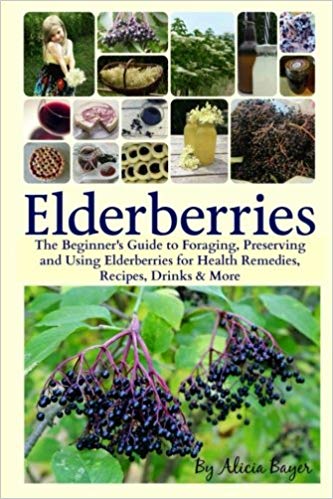
Elderberries:
The Beginner's Guide to Foraging, Preserving and Using
Elderberries for Health Remedies, Recipes, Drinks
& More |
 Ohio
Pawpaws (Asimina triloba) Ohio
Pawpaws (Asimina triloba)
|
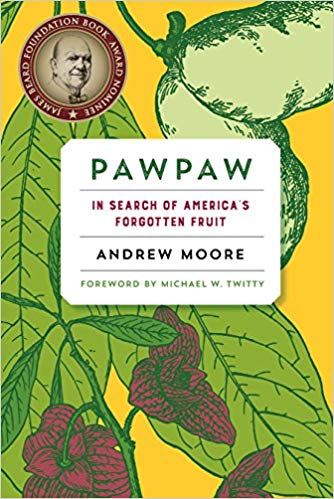
Pawpaw:
In Search of America’s Forgotten Fruit |
Ripe
pawpaws have an aroma that is fruity
and floral. The flavor is sweet. When ripe, the fruits
are soft, like a ripe avocado or peach. In the late
stages of ripeness the skin develops brown blotches,
streaks, and freckles like a banana. The flesh of
a ripe pawpaw will be yellow, soft, and smooth. Fruit
can vary considerably in size, but normally weighs
between 5 ounces and 1 pound.
Pawpaws
are very perishable. When completely ripe, pawpaws
will last for only about two days at room temperature.
Refrigerated at 40-45°F, the same fruits may last
a week. If the fruits are not quite ripe, they may
be refrigerated for about two weeks and then ripened
at room temperature for several days.
The
best use of pawpaws is for fresh eating. NOTE: Eating
an unripe pawpaw can cause gastric distress! The easiest
way to eat them is to cut them in half and scoop the
flesh out with a spoon. The large seeds, scattered
throughout the fruit, are easily separated from the
flesh. Pawpaw works well in ice cream, sorbet, chiffon
pie, and mousse, and combines well with mint. Because
of its flavor resemblance to banana, it may be substituted
in recipes for such things as banana bread. It is
also used in delicious cooked fruit butter, jam and
sauce.
|

Pawpaw
blossoms in the spring |

Late
summer progress |

How
to tell when it is almost time to harvest. Critters
begin their feast! |
 American
Persimmon (Diospyros virginiana) American
Persimmon (Diospyros virginiana)
American
persimmon trees (Diospyros virginiana) bear crops of medium-sized,
rich-tasting fruit. Ripe American persimmon fruit typically
falls to the ground around the tree when it is time to harvest,
usually in October after a frost. When ripe, the fruits
actually have a rich, honeylike flavor and date like texture.
Unripe fruit tends to have a more astringent flavor.
Persimmons
are attractive trees with large, leathery leaves that turn
beautiful bright colors in the fall. The bright orange fruit
often hangs on the branches long after the leaves drop.
The ripe fruits are delicious when eaten fresh, but they
also make good pies, breads, cookies, and cakes.
|
|
WILD
ROOTS
 Dandelion
(Taraxacum officinale) Dandelion
(Taraxacum officinale)
The
Dandelion Plant is an incredible and versatile wild edible.
From flower to root, the entire plant is edible. Dandelions
are perennial. They are short plants that usually don't
grow larger than 2 feet high. They green stalks and leaves
and yellow flowers. They grow wild in the spring and all
season. Leaves have a sharp, tangy flavor
similar to endive or chicory. Good source of iron, vitamin
C and A. A mild diuretic. We harvest and dry our dandelion
roots for use in our teas.
 Wild
Ginger (Asarum canadense) Wild
Ginger (Asarum canadense)
Wild ginger grows 6 to 10 inches tall and
spread 12 to 24 inches wide and is a vigorous groundcovers
that spread by rhizomes, or underground root structures.
The distinctive heart-shaped leaves grow on 4 to 12 inch-long
stems that rise in pairs from the rhizome. Reddish brown
flower with no petals appears between the two leaf stalks
at ground level; Ants pollinate the wild ginger plant.
It’s
roots can be used as a ginger substitute and leaves brewed
into a tea. Leaves and roots are used as flavoring. Roots,
fresh or dried, can be a ginger substitute. They can be
candied and the syrup can be used on desserts and ice cream.
Can also be made into a beverage to settle the tummy.
We
carefully manage our ginger in the wild on our own property.
We do not harvest large quantities, when we do harvest,
it is because we are splitting plants to relocate them or
to thin an over crowded area.
 Goldenseal
(Hydrastis canadensis) Goldenseal
(Hydrastis canadensis)
(Yellow
Root, Yellowroot, Orange-Root, Orangeroot)
Is
a perennial herb in the buttercup family Ranunculaceae.
The
plant is a native of Canada and the eastern United States,
the chief States producing it being Ohio, Kentucky, West
Virginia, Indiana, New York and in Canada, Ontario. Most
of the commercial supplies are obtained from the Ohio Valley.
It is scarce east of the Alleghany Mountains, having become
quite rare in New York State, where it has been almost exterminated
by collectors.
Goldenseal,
traditionally was used as a folk or traditional remedy for
infections. Today, goldenseal is sold to help with digestion,
soothe an upset stomach, and to kill bacteria. It is
considered a natural antibiotic and is often combined with
echinacea and promoted as strengthening the immune
system.
Goldenseal
derives its value from berberine, hydrastinine and canadine
contained in its rootstock. These compounds have proven
antibiotic properties and are extracted by pharmaceutical
companies for a variety of uses. Goldenseal has been found
to be effective against a number of disease-causing organisms,
including Staphylococcus, Streptococcus, and Chlamydia species,
E. coli, Salmonella typhi, Entamoeba histolytica and others
The
berberine provides the bright golden yellow color to the
herb. Other compounds found in goldenseal are albumin, b-complex
vitamins, biotin, calcium, candine, chlorine, choline, chlorogenic
acid, inositol, iron, lignin, manganese, PABA, phosphorus,
potassium, vitamin A, C & E. Goldenseal is considered
a bitter herb, which is said to assist with stimulating
digestion.
We
carefully manage our Goldenseal in the wild on our own property.
We do not harvest large quantities for export or sell the
fresh roots for any reason. The number of plants we have
grows each year. When we do harvest, it is in the fall.
We dig mature roots and replant bits of the roots so they
continue to re establish in our woods. We dry the roots
and sell the dried roots at local markets only.
Avoid
During Pregnancy. Goldenseal should not be given to children
or infants.
 Ramps
(wild leeks, Spring onions,
Allium tricoccum) Ramps
(wild leeks, Spring onions,
Allium tricoccum)
Ramps
are a North American species of wild onion widespread
across eastern Canada and the eastern United States.
They
can be found in cool, shady areas with damp, rich
soil high in organic matter. New leaves emerge from
the perennial bulb in early spring, usually late March
or early April, before the tree canopy develops. By
late May, the ramp leaves begin to die back and a
flower stalk emerges. The flower blooms in June and
the seeds mature atop a leafless stalk. Eventually
the seeds fall to the ground to germinate near the
mother plant.
As
one of the first plants to emerge in the spring, ramps
were traditionally consumed as the seasons first “greens.”
They were considered a tonic because they provided
necessary vitamins and minerals following long winter
months without access to fresh fruits and vegetables.
Both the white lower leaf stalks and the broad green
leaves are edible. In Appalachia, ramps are most commonly
fried with potatoes in bacon fat or scrambled with
eggs and served with bacon, pinto beans, and cornbread.
|
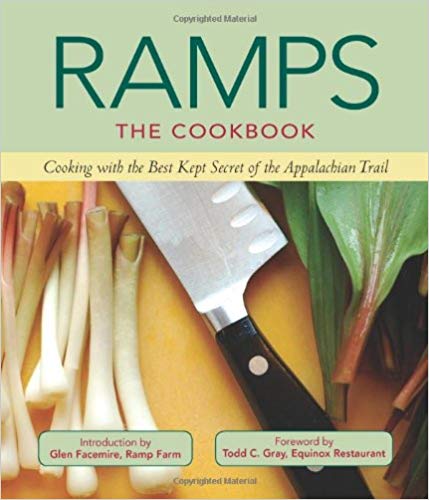
Ramps:
the Cookbook: Cooking with the Best Kept Secret of
the Appalachian Trail |
|
|
In
recent years, chefs have been promoting ramps as a
gourmet food item. This has created a rising demand
for large supplies of ramps and as a result, native
populations of ramps are dwindling. Ramp populations
need many years to recover from a single harvest.
It takes a long time for seeds to germinate and many
years for plants and/or transplanted bulbs to be vigorous
enough to harvest. Smoky Mountain National Park banned
the harvesting of ramps in 2002 and they are critically
endangered in areas where they once thrived due to
over harvesting by chefs and amateur foragers.
Ramps
require a very specific environment for commercial
farming. It is difficult to emulate the forest microclimate,
but if you have the natural habitat, it's worth pursuing.
In 2015 we began transplanting wild ramps from established
areas into habitats where we are cultivating ramps
in marketable quantities. The wild supplies we know
about are on private land and are protected from foraging.
Our cultivated plots are thriving and we believe we'll
be able to offer ramp products starting in 2019.
|
|
|
|

